I got a new oscilloscope :) (proud amateur moment)
I am trying to visualize the internal clock of a STM32G431RBT6 MCU. So I built an example program given by the vendor which provides the MCU clock output on a GPIO pin. I connected my Rigol DS2202A oscilloscope (200MHz with 2GSa/s and 58Mpts) with the pin and these are the output waveforms I got.
HSE output (24 MHz)
PLL output in Range 1 boost mode (170MHz)
I am using a passive probe PVP2350 details given below
- Specifications | 1 : 1 | 10 : 1
- Input Impedance | 1 MΩ ± 1% | 10 MΩ ± 1%
- Bandwidth | DC ~ 35 MHz | DC ~ 350 MHz
- Compensation Range | 6 pF ~ 24 pF| 6 pF ~ 24 pF
- Max. Input Voltage | CAT II 300 VAC | CAT II 300 VAC
As the speed of the MCU increases the waveform shifts from being barely square to sinusoidal. Does this have to do with my oscilloscope limitations, or is this the kind of waveform to expect from the clock out pin of an MCU? Also the Vpp is shown negative and I am trying to understand the why behind all of this data.


